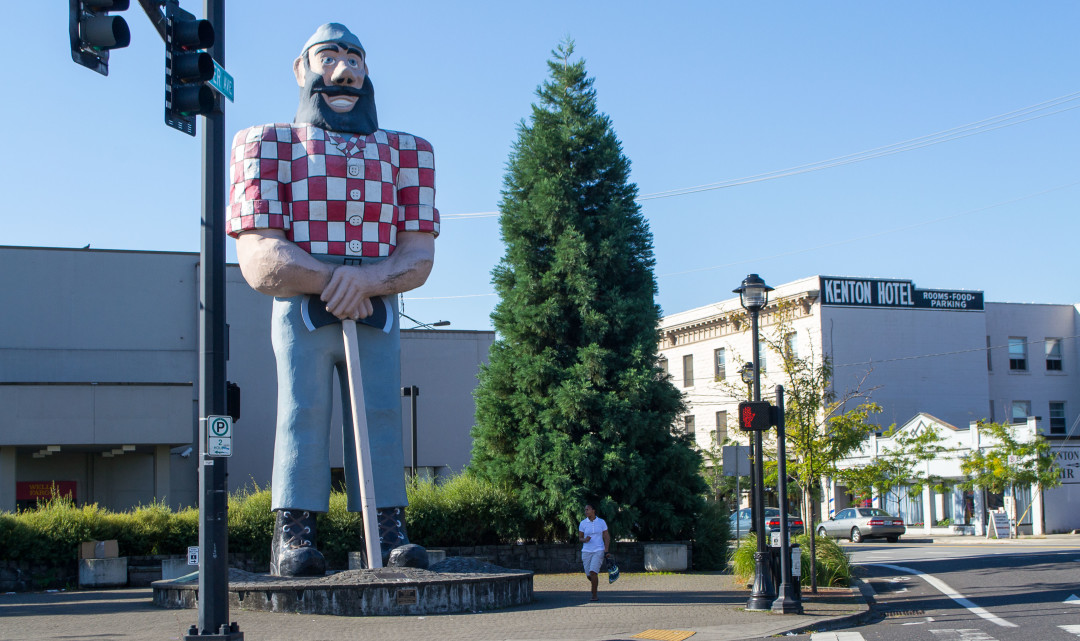North Portland’s Iconic Paul Bunyan Statue is Finally Getting Some Love

The Paul Bunyan statue in North Portland's Kenton neighborhood
Image: Wikimedia
The years have not been kind to this old, bearded lumberjack.
The paint is chipping off his boots, the folds of his shirt and arms are filthy, and his checkered shirt and blue pants are fading badly. Last winter, when the fire department removed a stocking cap placed by SantaCon revelers, they found a chunk of plaster missing from the top of his head.
Luckily for him, the Paul Bunyan statue—Oregon’s only historic roadside attraction and the homing beacon of its North Portland neighborhood—will get some much needed TLC.
“What could we do to have this guy look like a respectable fella again?” asks Angela Moos, Kenton Neighborhood Association's treasurer who is spearheading the project to get Paul Bunyan his makeover in spring or summer 2016.
Last month, the KNA—which doesn’t own the statue, but has assumed stewardship—raised enough money to do a thorough inspection of the damage. The biggest mystery Moos wanted answered: why Paul's last paint refresh in 2009 was failing so soon.
“We took a good hard look at what’s going on, why he’s in such rough shape,” says David Fredrickson of Figure Plant, the design and fabrication firm who did the inspection. “There are four different types of paint failure happening. The repaint that was done 2009 is separating from the paint that was not removed when they did that. The paint layers underneath are parting from the original surface. There’s a lot of cracking of the paint over areas that were patched. And there is degradation of the paint overall probably from moisture and UV exposure.”
While they have no way to inspect the statue's steel bones until they can make a bigger hole, Fredrickson adds, “Our assumption is that he’s structurally sound.”
The 31-foot tall statue was built in Kenton in 1959 for Oregon’s centennial celebration. For years after, he stood stoically at the corner of North Interstate and Argyle. Periodic restorations in the 80s and 90s slapped on new layers of fresh paint (an apocryphal solid-colored shirt briefly covered the original checkers). In 2002 the arrival of the Yellow MAX line bumped him 59 feet south to the small plaza where he stands now. Fittingly, the Figure Plant office, which makes custom props, vehicles, and models like this 22-foot tall, white unicorn statue for Project Pabst in 2014.e obvious, is directly across the street from the statue—the same building where Kenton Machineworks originally built him.
Figure Plant has begun work on a detailed cost estimate, while the KNA is kicking into fundraising mode for the eventual restoration. Moos says she hopes to be able to raise enough money to spruce up the plaza where he stands, too, and maybe even establish a new fund for maintenance going forward.
“It’s the neighborhood icon,” says Moos. “It’s a sense of neighborhood pride, and it’s a central meeting point.”




